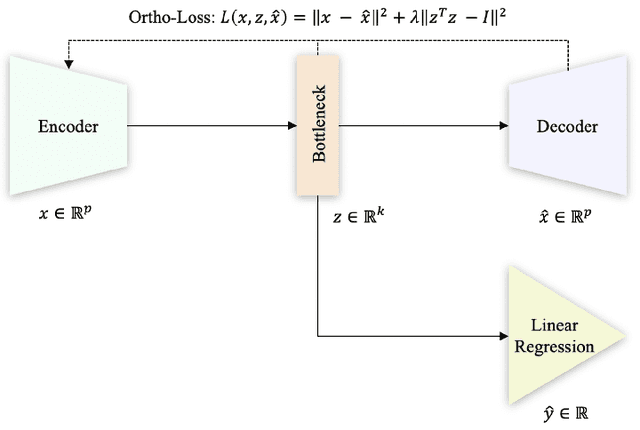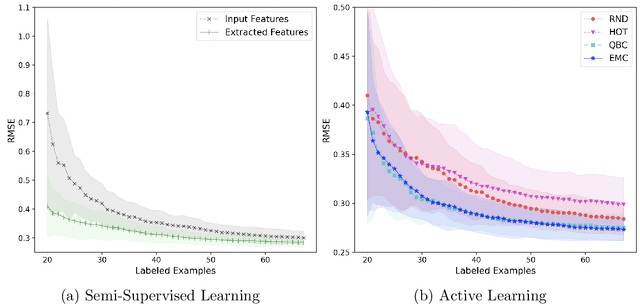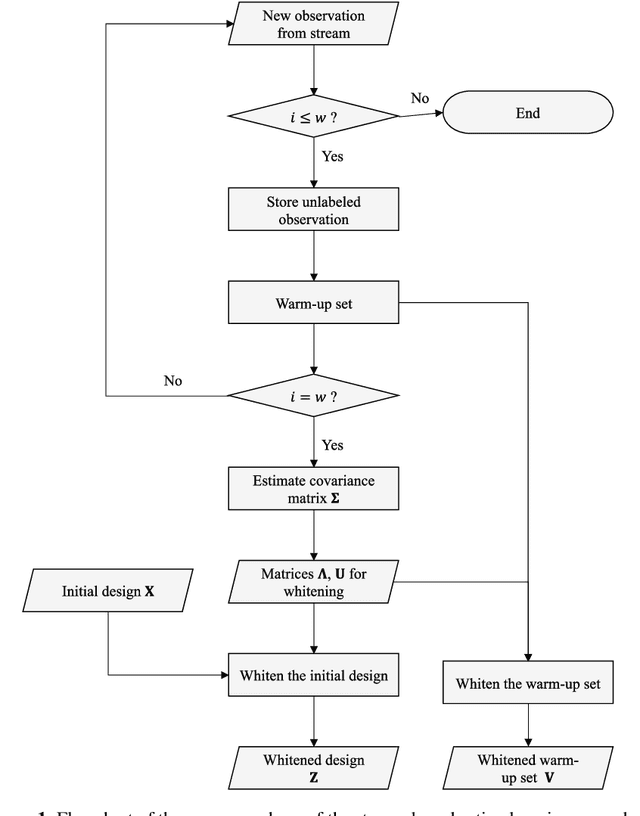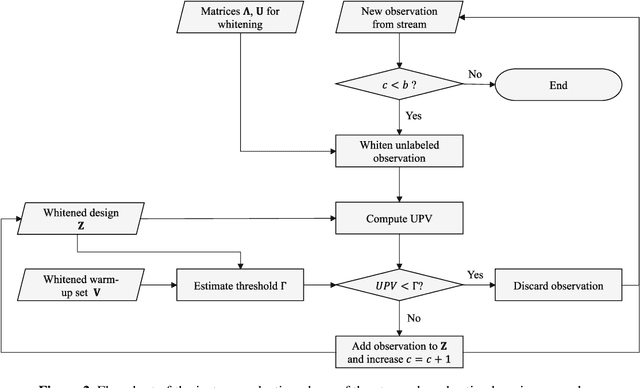Murat Kulahci
A survey on online active learning
Feb 17, 2023Abstract:Online active learning is a paradigm in machine learning that aims to select the most informative data points to label from a data stream. The problem of minimizing the cost associated with collecting labeled observations has gained a lot of attention in recent years, particularly in real-world applications where data is only available in an unlabeled form. Annotating each observation can be time-consuming and costly, making it difficult to obtain large amounts of labeled data. To overcome this issue, many active learning strategies have been proposed in the last decades, aiming to select the most informative observations for labeling in order to improve the performance of machine learning models. These approaches can be broadly divided into two categories: static pool-based and stream-based active learning. Pool-based active learning involves selecting a subset of observations from a closed pool of unlabeled data, and it has been the focus of many surveys and literature reviews. However, the growing availability of data streams has led to an increase in the number of approaches that focus on online active learning, which involves continuously selecting and labeling observations as they arrive in a stream. This work aims to provide an overview of the most recently proposed approaches for selecting the most informative observations from data streams in the context of online active learning. We review the various techniques that have been proposed and discuss their strengths and limitations, as well as the challenges and opportunities that exist in this area of research. Our review aims to provide a comprehensive and up-to-date overview of the field and to highlight directions for future work.
Robust online active learning
Feb 01, 2023Abstract:In many industrial applications, obtaining labeled observations is not straightforward as it often requires the intervention of human experts or the use of expensive testing equipment. In these circumstances, active learning can be highly beneficial in suggesting the most informative data points to be used when fitting a model. Reducing the number of observations needed for model development alleviates both the computational burden required for training and the operational expenses related to labeling. Online active learning, in particular, is useful in high-volume production processes where the decision about the acquisition of the label for a data point needs to be taken within an extremely short time frame. However, despite the recent efforts to develop online active learning strategies, the behavior of these methods in the presence of outliers has not been thoroughly examined. In this work, we investigate the performance of online active linear regression in contaminated data streams. Our study shows that the currently available query strategies are prone to sample outliers, whose inclusion in the training set eventually degrades the predictive performance of the models. To address this issue, we propose a solution that bounds the search area of a conditional D-optimal algorithm and uses a robust estimator. Our approach strikes a balance between exploring unseen regions of the input space and protecting against outliers. Through numerical simulations, we show that the proposed method is effective in improving the performance of online active learning in the presence of outliers, thus expanding the potential applications of this powerful tool.
Online Active Learning for Soft Sensor Development using Semi-Supervised Autoencoders
Dec 26, 2022


Abstract:Data-driven soft sensors are extensively used in industrial and chemical processes to predict hard-to-measure process variables whose real value is difficult to track during routine operations. The regression models used by these sensors often require a large number of labeled examples, yet obtaining the label information can be very expensive given the high time and cost required by quality inspections. In this context, active learning methods can be highly beneficial as they can suggest the most informative labels to query. However, most of the active learning strategies proposed for regression focus on the offline setting. In this work, we adapt some of these approaches to the stream-based scenario and show how they can be used to select the most informative data points. We also demonstrate how to use a semi-supervised architecture based on orthogonal autoencoders to learn salient features in a lower dimensional space. The Tennessee Eastman Process is used to compare the predictive performance of the proposed approaches.
Stream-based active learning with linear models
Jul 20, 2022



Abstract:The proliferation of automated data collection schemes and the advances in sensorics are increasing the amount of data we are able to monitor in real-time. However, given the high annotation costs and the time required by quality inspections, data is often available in an unlabeled form. This is fostering the use of active learning for the development of soft sensors and predictive models. In production, instead of performing random inspections to obtain product information, labels are collected by evaluating the information content of the unlabeled data. Several query strategy frameworks for regression have been proposed in the literature but most of the focus has been dedicated to the static pool-based scenario. In this work, we propose a new strategy for the stream-based scenario, where instances are sequentially offered to the learner, which must instantaneously decide whether to perform the quality check to obtain the label or discard the instance. The approach is inspired by the optimal experimental design theory and the iterative aspect of the decision-making process is tackled by setting a threshold on the informativeness of the unlabeled data points. The proposed approach is evaluated using numerical simulations and the Tennessee Eastman Process simulator. The results confirm that selecting the examples suggested by the proposed algorithm allows for a faster reduction in the prediction error.
 Add to Chrome
Add to Chrome Add to Firefox
Add to Firefox Add to Edge
Add to Edge